Peru and Ecuador are considered the birthplace of tomatoes. The ancient Indians grew fragrant fruits for food and magical rituals. Tomato came to Russia at the end of the 18th century. He liked our great-grandfathers no less than the Incas and Maya. The tomato is romanticly called the "love apple." Planting a southern crop in polycarbonate greenhouses allows you to harvest a rich crop. Defenseless saplings and berries of tomatoes attract various pests. One of the most annoying is the wireworm.
Table of contents
Wireworm - what it looks like and what crops it eats
Wireworm - wormlike larva The beetle beetle is from 1 to 5 cm long. It has a thin rigid body with a shiny cover of brown color.
Winter spends digging into the soil to a depth up to 50 cm. In the first year of life, their length is only 7 mm. In the 2nd and 3rd years they grow and feed heavily. On the 4th year in August, the larva makes a mink in the soil and pupates there.
Young bugs overwinter in their burrows. Their mass departure begins in April. From May to July, the nutcrackers lay eggs under the lumps of earth, cracks in the soil. After 2-3 weeks of new eggs appear wireworm.
- Wireworm larvae
- Beetle beetle
It feeds on roots, stems, tubers, young shoots and it eats even flowers. Beetles harmless by themselves. The danger for the harvest are the larvae. The wireworm is a great lover of wheatgrass creeping.
How to damage tomatoes
The pest bites into the young tender stems and roots of tomato seedlings. Damaged plants are stunted, yellow and dry. Bacteria and fungi willingly settle in the pits done by the pest, causing rotting of the tomato.Often eats flowers, greatly reducing yields.
Wireworm does not touch plants of burgundy and pink varieties.
Where does the greenhouse come from
- The wire-guard already lived on that plot of land where the greenhouse was built and the tomatoes were planted.
- Availability wheatgrass indicates the occupancy of the plot by the pest. Even the weed weed left between the beds is good food for the wireworm.
- Wet, warm soil greenhouses like wireworms.
- In the greenhouse there are no birds eating wireworms in natural conditions.
- In imported soil there were larvae click.
- Likes to live on acid clay soils.
- Plants planted close to each other.
- The soil does not loosen and does not dig up for the winter.
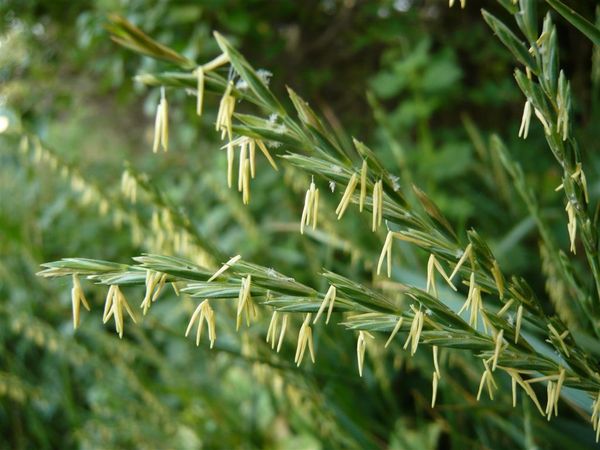
How to get rid of the pest on tomatoes
Agrotechnical techniques:
- Get rid of weeds, especially from the wheatgrass and burdock. Do not leave weeded weeds in the area, burn them together with rhizomes.
- Permanent soil loosening. Dig the soil and let the sun warm the earth before planting a new seedling. The larvae will die (not all, of course, but enough).
- Wireworm can't stand mustard, rape, buckwheat, spinach, dahlia. Plant these plants in between rows. Not to taste the pest and legumes - peas, beans, lupine.
- The trap is made from a half-liter jar dug in the neck. Put carrot and potato pieces there. The wireworm will crawl over the food and will not get out.
- Another trap looks like sliced potatoes, carrots and beets strung on a wire. Bury to a depth of 10-15 cm. After 3-4 days to get the traps, destroy the caught pests, update the bait and bury it again. Change the location of traps.
- The pest settles on acidic soil. To reduce the acidity make chalk, egg shells, wood ash, dolomite flour. Dolomite flour is a mineral fertilizer of natural origin. Contains calcium and magnesium. Additives contribute to the soil when digging, loosening, planting.
- Sufficient watering of plants and soil moisture.. Sometimes too dry soil makes the wireworm look for moisture in succulent stems.
- Put a handful of onion peel or a pinch of mustard powder in the hole before planting.
Preparations in the fight against wireworm
- Basudin
- Provotox
- Nemabakt
- Watering plants weak manganese solution (to 10 liters of water dissolve 5 g of powder).
- Introduction nitrogenous fertilizer. Ammonium sulfate and ammonium chloride at 30 g per 1 m2, ammonium nitrate - 20 g per 1 m2. Fertilize the soil before flowering plants and during the fruit ovary.
- "Basudin"- insecticide intestinal and contact lesions. The active ingredient is diazonin. Produced in granular form, in a package of 30 g. Fill a clean container with three-quarters dry sand. Pour in the product packaging and stir evenly. Before planting seedlings in each hole fill one teaspoon of the resulting sand mixture. The action lasts up to one and a half months.
- "Diazonin" 10 RG - a powerful insecticide for pest control, paralyzing the nervous system. It is a low odor oil. The drug is treated plants in the growth stage. Saves effect up to 3 weeks. Neither the soil nor the crop does not accumulate.
- Aktara - Tiatoxam-based insecticide.Gets into stalks and leaves of plants, does not accumulate in fruits. When spraying, it retains the effect for up to 4 weeks, when applied to the soil - up to 6 weeks. The drug is available in granules. A solution for irrigation is prepared in proportion to 4 g of granules per 10 liters of water. Spraying is done by dissolving 1.2 g of the drug in 10 liters of water.
- "Provotoks" - Another drug based on diazonin. It is also produced in granules (packs of 40/120 g). 2-4 pellets are introduced into the hole before planting. Packing 40 g is enough for 10 m2. At temperatures above 250 degrees, the drug is not used. It is recommended to work with the drug in the morning or in the evening, in dry, calm weather.
- "Nemabakt" - not a chemical, but a biological drug. Contains microscopic nematodes and bacteria. The nematode is implanted in the wireworm, the bacterium destroys its insides. Use the drug at temperatures up to 250 degrees. One packet of the drug dissolved in 10 liters of pure water (t = 200C). Wait 1.5 hours. Take from a bucket with the drug 0.5 liters and pour it into a watering can. One watering can about 5 m2. Watering is done in the evening, preferably after rain or normal watering.
Try to get rid of the pest agrotechnical methods.When working with toxic substances, strictly follow the instructions for use and your own safety.
The wireworm is a dangerous pest that significantly degrades the crop of tomatoes. It is possible and necessary to fight it, despite the length and complexity of the process. It is impossible to get rid of the nutcracker by 100%, it is painfully tenacious and numerous. However, a significant reduction in the number of individuals is quite achievable. And believe me, it's worth it! The reward for shock work will be a record collection of ripe tomatoes.
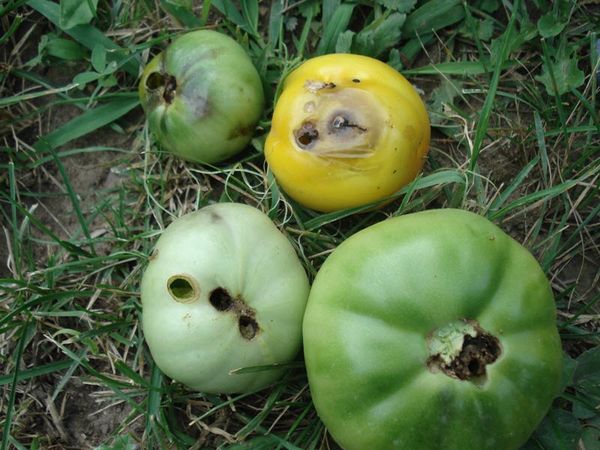

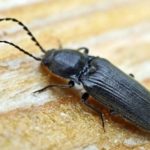
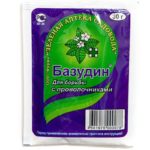

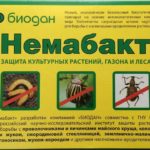
I’ve been struggling for years, sticking a potato rug onto a stick and sticking it in between rows helps well